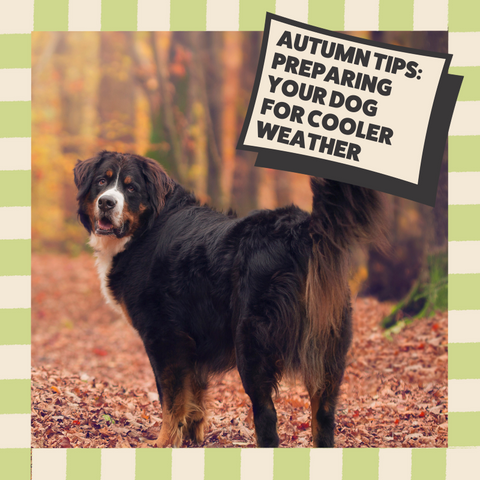What Every Dog Owner Should Know: 5 Tips from an Animal Science Perspective
Before training to become a dog groomer, I achieved a First Class BSc (Hons) degree in Animal Science from the University of Nottingham which deepened my understanding of animals. While dog grooming may not be the first career path people associate with an Animal Science degree, my studies have equipped me with knowledge that enhance the grooming experience for both pets and their owners. My degree equipped me with an in-depth understanding of animal behaviour, health, nutrition, anatomy, and welfare.
This scientific background has provided me with valuable skills to better understand dogs, giving appreciation for the complexities of canine health and wellbeing. The blend of theoretical knowledge and hands-on experience shapes the way I approach my work, enabling me to identify underlying issues during grooming sessions and ensure an experience that is as stress free as possible.
Here are five essential tips for dog owners, rooted in scientific principles I learned during my degree:
1. Provide a Balanced Diet Suited to Your Dog’s Needs and Life Stage:
During my studies, I gained an understanding of the vital roles nutrients play, such as protein for muscle repair and providing essential amino acids, fats as a key energy source, and fibre for supporting digestion. Choosing the right food is vital as it supports immune health, growth, and metabolic processes. A balanced diet is crucial and it’s important to tailor their food to their specific needs based on age, size and activity level. Many dog food brands offer breed specific formulas, which is simply a marketing strategy. The nutritional needs of dogs are more closely related to their size, age, and activity level, not their breed. A puppy would need a nutrient-dense food to support growth and energy requirements, while senior dogs may require a food that is lower in calories and fat, but higher in fibre to aid digestion.
Active dogs, especially working breeds, need higher levels of protein to fuel their muscles and provide lasting energy. Understanding your dog’s life stage and adjusting their diet accordingly helps prevent health issues like obesity, malnutrition or digestive problems. Obesity is one of the most common health issues seen in dogs and it can have severe consequences, including joint problems, heart disease, diabetes, and a shortened lifespan.
Choosing the right food for your dog can feel overwhelming, but the website www.allaboutdogfood.com can be a valuable resource. It allows you to input details such as your dog’s breed, size, weight, age, and your daily budget to find suitable options. Run by a leading nutritionist, the site offers a wealth of unbiased information about feeding and nutrition, as it operates independently without any brand influence.
2. Encourage Mental AND Physical Stimulation:
Physical and mental stimulation are essential for maintaining a happy and healthy dog. Regular exercise is vital for managing weight and promoting good cardiovascular health, but mental challenges are equally important- and can be just as tiring! Studies have shown that 20–30 minutes of sniffing can exhaust a dog as much as an hour long walk. Activities like walking, fetch, and running provide the necessary physical exercise, while mental stimulation keeps your dog’s mind sharp and engaged. Incorporating both helps prevent boredom, stress, and behavioural problems.
Mental stimulation comes in many forms. Puzzle toys are excellent for challenging a dog’s problem solving skills. These toys often require the dog to figure out how to retrieve a treat or toy hidden inside. It’s helpful to consider whether your dog is more food or toy motivated when selecting these (or both!).
Puzzle toys come in varying levels of difficulty, so you can choose one that suits your dog’s abilities. Treat dispensing toys like Kongs or creative options such as hiding treats in a knotted towel are great examples. These can also be used during mealtime to slow down eating and encourage your dog to work for their food. Scent work is another fantastic way to stimulate your dog mentally by tapping into their natural instincts. You can create simple games by hiding treats or favourite toys around your home and encouraging your dog to find them using their nose. Start with easy hiding spots, gradually increasing the challenge as your dog improves.
During my studies, I gained insight into how physical and mental
engagement are deeply interconnected. I learned that dogs lacking sufficient stimulation, even if they get enough exercise, are more likely to develop undesirable behaviours such as destructive chewing, excessive barking, or aggression. By providing a balance of physical and
mental stimulation, you can help your dog stay happy and stress free while encouraging positive behaviours.
3. Understand and Respect Your Dog’s Communication, Body Language, and Stress
Signals:
During my degree, I studied animal behaviour in-depth including how dogs communicate their feelings through body language. I learned to interpret stress signals such as lowered body posture, excessive panting, or tucked ears, which can indicate fear or discomfort.
Dogs primarily communicate through body language, making it essential to understand their signals in order to build trust and maintain a healthy relationship. For example, a wagging tail doesn’t always mean a happy dog. It can also signal excitement, anxiety, or agitation, depending on other cues such as ear position, posture, and facial expression, which provide further insight into your dog's emotions. Ears pulled back or flattened against the head may indicate fear or anxiety, while a tense mouth with raised lips or exposed teeth signals aggression. Dogs also communicate through vocalisation such as barking, whining, and growling.
Barking may indicate excitement or
frustration, while whining often signals stress or a need for attention. Growling can indicate a threat or may be part of playful behaviour, especially when accompanied by a wagging tail, a relaxed face. Other behaviours, such as licking (not related togrooming), yawning, pacing, or lifting a paw, can indicate anxiety. Yawning may signal stress, while actions like backing away or turning their head show uncertainty or an attempt to avoid conflict or being touched/stroked.
Recognising your dog's signals is essential as it helps you identify signs of fear, discomfort, or aggression before they escalate into a defensive response which can lead to bites.
4. Train Using Positive Reinforcement:
In my studies, I learned how animals, including dogs, respond best to reward based training. Training with positive reinforcement is one of the most effective and ethical methods for eteaching dogs new and desired behaviours. This approach involves rewarding your dog with treats, praise, or play when they perform a behaviour that you want to encourage.
By associating good things with following instructions, your dog learns that positive actions lead to positive outcomes. This method fosters a strong, trusting bond between you and your dog and promotes a more motivated, enthusiastic learner. Positive reinforcement has been shown to be far more effective than punishment-based methods, which can create fear, anxiety, and confusion in dogs. Punishment often leads to behavioural issues, such as aggression or withdrawal and can damage the trust between dog and owner. In contrast, positive reinforcement strengthens the bond by rewarding your dog for doing the right thing, encouraging them to keep learning and engage with you.
One powerful tool in positive reinforcement training is clicker training. Clicker training uses a small handheld tool that makes a distinct clicking sound when pressed (or you can mimic this sound using your mouth). This sound marks the exact moment your dog performs the desired
behaviour, providing immediate feedback that helps them understand what they did correctly. The click is followed immediately by a reward (such as a treat or toy), reinforcing and pairing the sound with the behaviour. Over time, your dog associates the click with a reward, making the learning process consistent and more effective. Clicker training is especially useful for teaching precise behaviours and tricks, as it allows for quick and consistent marking of actions.
5. Focus on Socialisation:
Socialisation is one of the most important aspects of raising a dog. Proper socialisation involves exposing your dog to a variety of people, animals, environments, and situations in a controlled and positive manner. This helps your dog develop confidence and learn appropriate behaviour, reducing the likelihood of fear-based aggression or anxiety. Socialising your dog at a young age is especially important, but even adult dogs can benefit from gradual exposure to new experiences.
Attending puppy classes with a qualified behaviourist is an excellent way to ensure proper socialisation and learn effective training techniques. These classes offer a safe, structured environment where your dog can interact with other puppies and people while mastering basic skills. In this controlled setting, trainers can guide interactions to prevent negative experiences. Puppy classes teach your dog appropriate social cues and behaviours, fostering positive experiences that build confidence and reduce the likelihood of future behavioural issues.
On the other hand, allowing your dog to interact off-lead with unfamiliar dogs in uncontrolled environments, such as crowded dog or puppy parks, may not be the best choice. Unsupervised interactions can lead to stress, fear, or aggression, especially if your dog becomes overwhelmed or encounters poorly socialised dogs. If you’re experiencing difficulties with your dog during walks or when interacting with other dogs, it’s a good idea to seek advice from a qualified behaviourist for guidance and support. Early and continuous socialisation is essential for shaping a dog’s temperament. Dogs that lack proper socialisation are more likely to develop fear, anxiety, or aggression in new or unfamiliar situations. Socialisation is key to encouraging positive behaviours and preventing future behavioural issues.
By understanding your dog’s physical and emotional needs, you can provide the best care possible. Implementing these tips, rooted in animal science, will ensure that your dog grows into a happy, healthy, and well-adjusted companion. With the right diet, stimulation, communication, training and socialisation, you’ll create a strong bond that lasts a lifetime.
Author: Ellen Bursnell - Dog Groomer at Slobber & Chops







